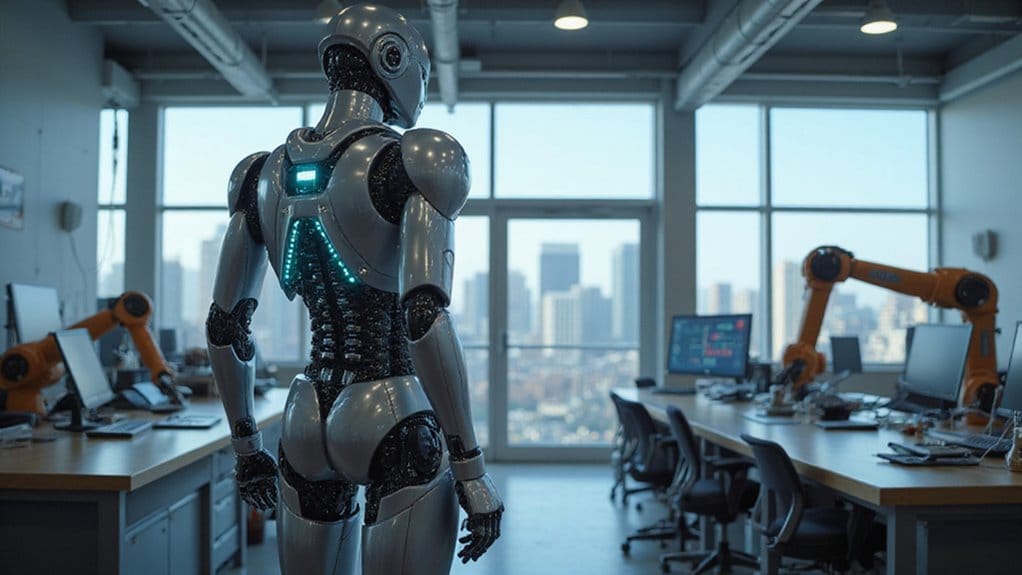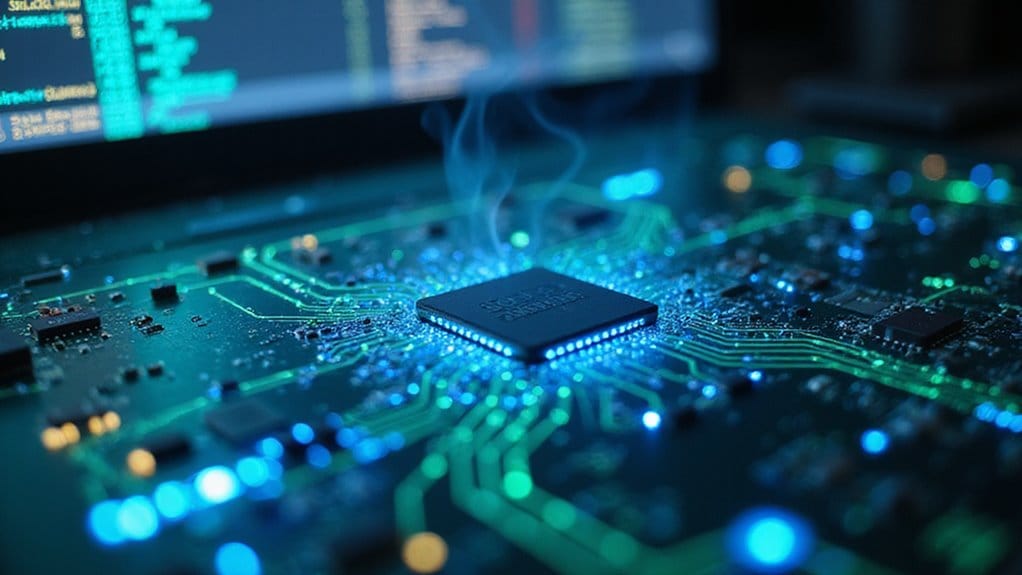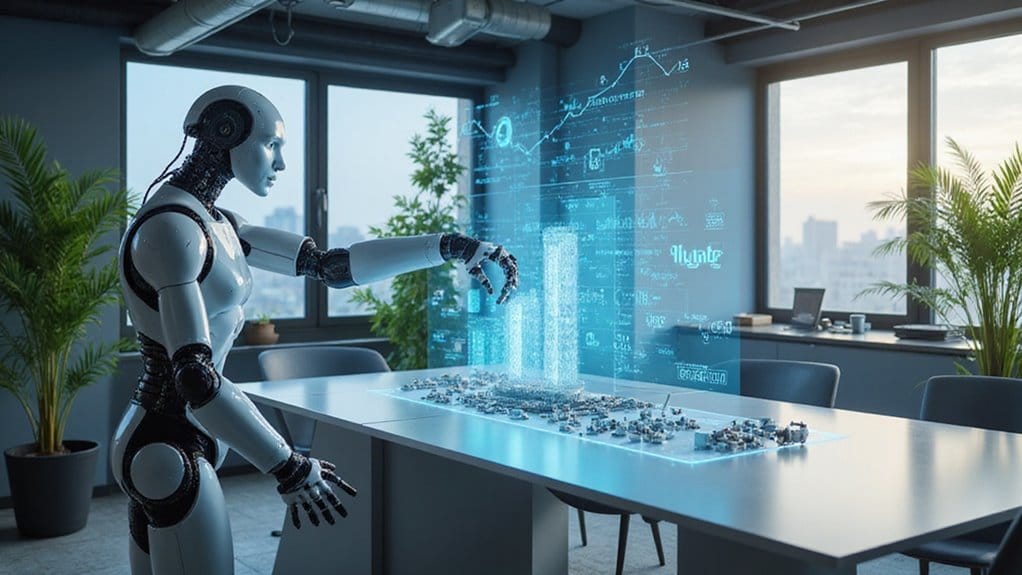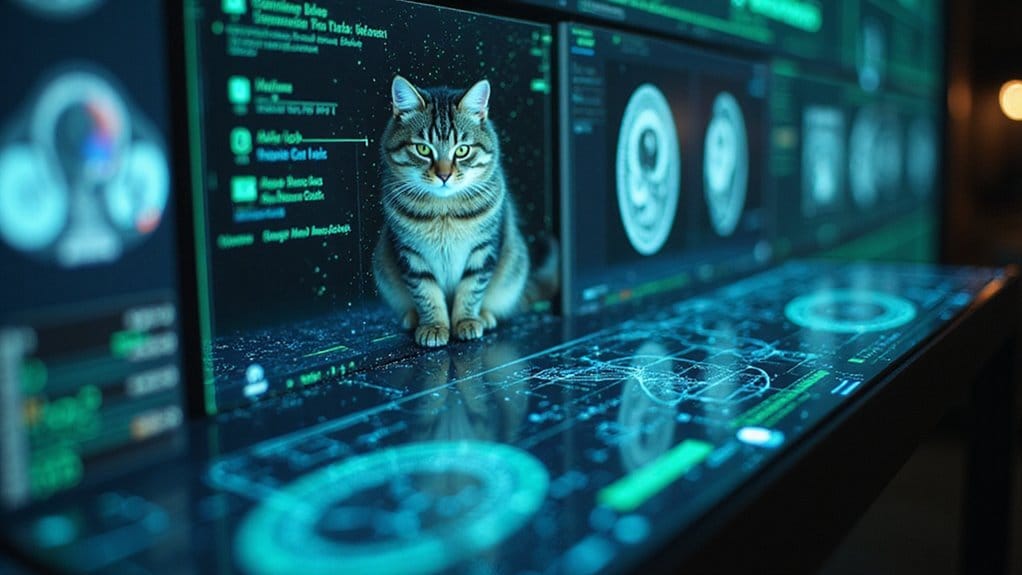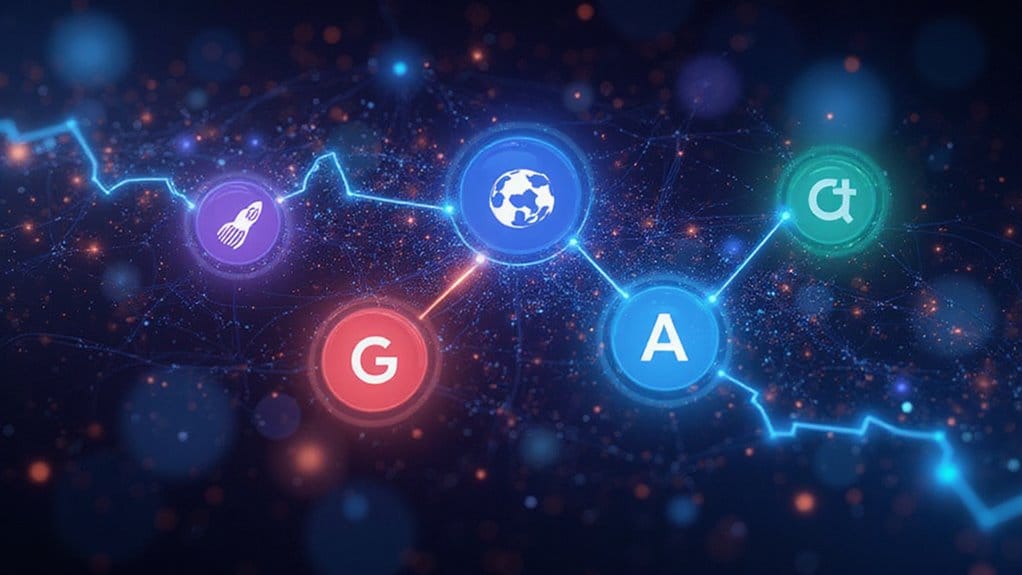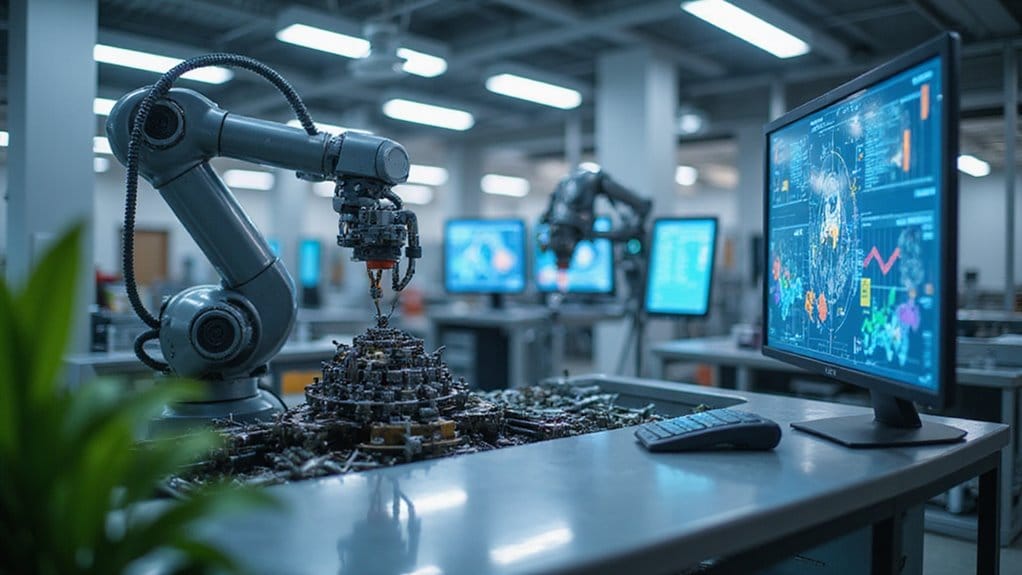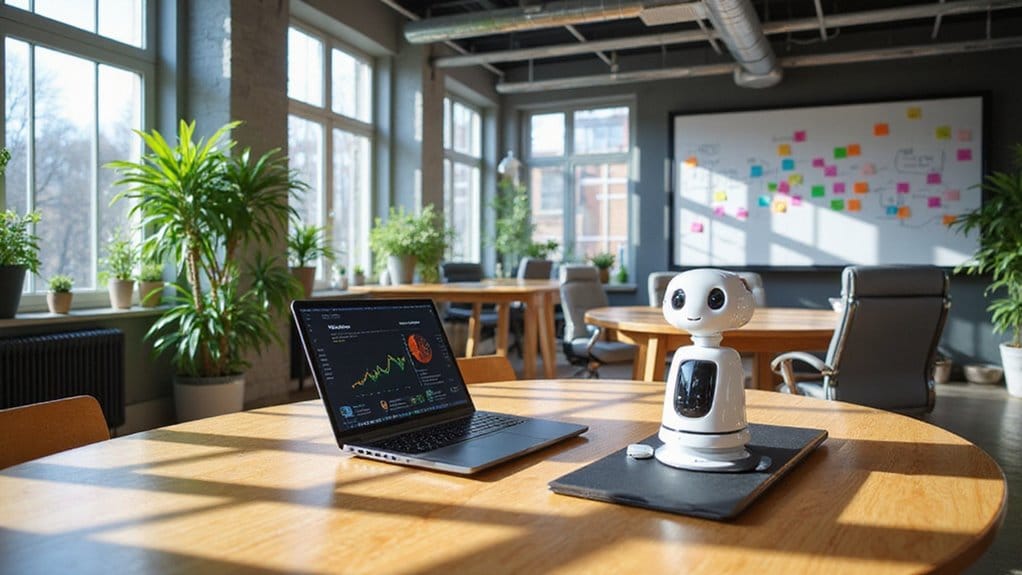AI and robotics are teaming up to create machines that are smarter, faster, and more adaptable. Think of them as tech-savvy buddies who never tire. Self-driving cars? Yes, please! These robots learn on the job, just like a puppy learns commands (but with fewer accidents). They tackle repetitive tasks so you can focus on the fun stuff. However, with great power comes great responsibility—understand the ethical concerns! Stick around, there’s a lot more to uncover!
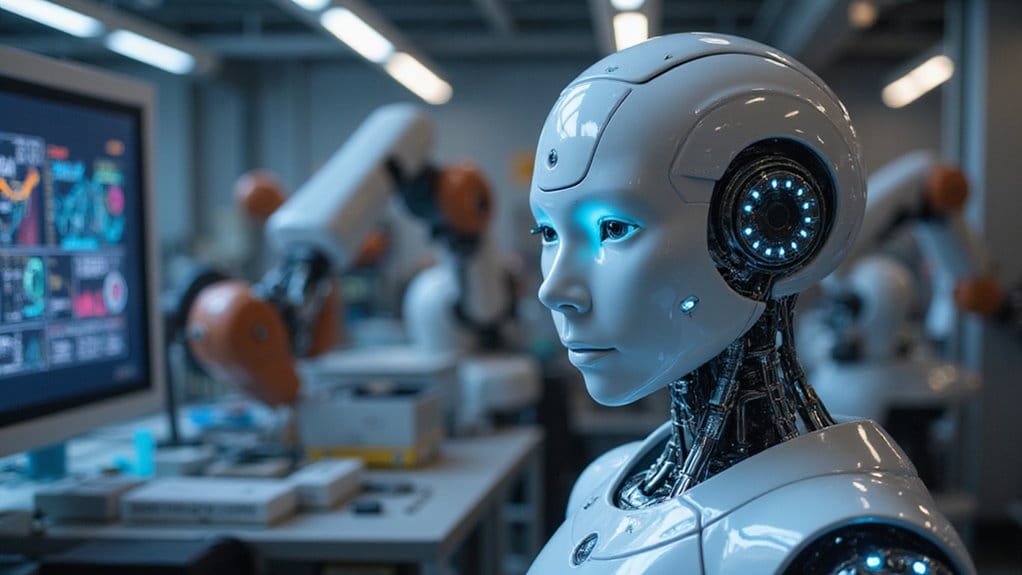
In the bustling world of technology, AI and robotics are the dynamic duo transforming industries faster than you can say “automation.” Imagine this: machines that think, adapt, and make decisions, all while you sit back and sip your coffee. As these intelligent systems converge, they create autonomous robots that can navigate complex environments and perform tasks with remarkable efficiency.
Want a sneak peek into the future? Consider self-driving vehicles! These marvels utilize advanced sensors and AI algorithms to make driving safer and easier—so you can scroll through social media instead of stressing over traffic.
Now, let’s explore the heart of the matter: machine learning. This nifty technology allows robots to learn from data, making them smarter over time. Think of it like training a puppy, but instead of fetching sticks, they’re fetching your groceries! This process of learning is crucial for autonomous task performance, enabling robots to adapt to new challenges and environments. As companies like Figures plan to manufacture 12,000 humanoid robots annually, the demand for advanced training methods becomes even more pressing. With the integration of computer vision, these robots can better understand and interact with their surroundings.
But with great power comes great responsibility, leading us to robotic ethics: the moral implications of what these machines can do. How do we guarantee they act safely and fairly? It’s a question worth pondering, especially as we hand over more tasks to our mechanical friends.
In the industrial sector, AI-driven robots are revolutionizing manufacturing, enhancing productivity, and reducing downtime. They tackle repetitive tasks, letting humans focus on creative work.
Meanwhile, in healthcare, surgical robots like the da Vinci system are redefining precision in surgeries, ultimately leading to quicker recovery times.
And let’s not forget logistics! AI robots are streamlining warehouses, sorting and transporting goods faster than you can say “order fulfilled.” They even predict equipment failures, saving companies money and headaches.
Frequently Asked Questions
How Do AI and Robotics Work Together in Practical Applications?
AI and robotics unite through automation integration, transforming industries.
Visualize this: robots equipped with machine learning adapt in real-time. They tackle tasks like sorting packages or harvesting crops, all while learning from previous actions.
Imagine a robot that learns to pick ripe strawberries—delicious, right? But beware! Without proper AI, robots could misidentify tasks.
What Industries Benefit Most From AI and Robotics Collaboration?
Industries like healthcare and manufacturing stand to gain the most from AI and robotics collaboration.
Envision this: healthcare automation means quicker diagnoses and personalized treatments, while manufacturing efficiency skyrockets with AI robots handling precision tasks.
Seriously, who wouldn’t want robots to reduce errors and speed things up?
If you’re in these sectors, don’t get left behind—embrace the future!
Immerse yourself in AI and robotics now, or risk being outpaced by competitors.
Are There Ethical Concerns With AI in Robotics?
Ethical concerns with AI in robotics are real and pressing.
Imagine machines making autonomous decisions, potentially biased due to flawed data. Yikes!
To mitigate bias, companies must actively design systems that prioritize fairness.
So, demand transparency and accountability. Ask questions! Guarantee ethical guidelines are in place.
Remember, just because a robot makes a choice doesn’t mean it’s right.
Stay informed, and don’t let your future be dictated by unexamined algorithms!
What Skills Are Needed to Work in AI and Robotics?
To excel in AI and robotics, one must master programming languages—think Python and Java, not just your grandma’s knitting pattern.
Problem-solving skills? Absolutely essential! You’ll need to tackle complex challenges like a Sudoku champion.
Don’t forget critical thinking; it’s your secret weapon for innovation. Embrace adaptability, too; technology shifts faster than a cat on a hot tin roof.
How Do We Ensure Safety in Ai-Driven Robots?
To guarantee safety in AI-driven robots, start with robust safety protocols. Conduct thorough risk assessments—yes, that means digging deep! Identify hazards and prioritize them.
Implement physical barriers; nobody wants to tango with a robot! Use advanced sensors for real-time monitoring. Train your team on safety procedures; it’s not just a suggestion!
Regular maintenance? Absolutely essential—don’t skip it! Remember, safety first, or risk becoming a cautionary tale. So, act wisely!
